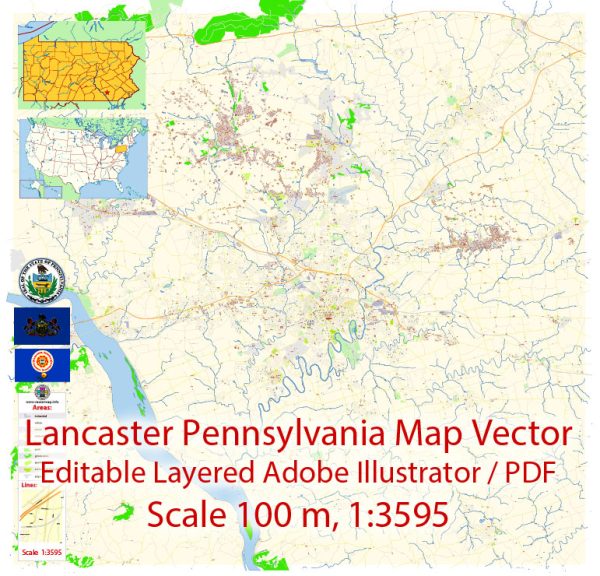Lancaster, Pennsylvania, has a rich history of urban development that spans centuries. As one of the oldest inland cities in the United States, Lancaster played a significant role in the country’s early development. Here’s an overview of the city’s urban history:
- Colonial Era and Founding (1700s): Lancaster was originally settled in 1718 and officially incorporated as a city in 1742. The city was named after Lancaster in England and quickly became a vital trading post due to its strategic location along the Conestoga River.
- Revolutionary War Period: During the American Revolution, Lancaster served as the capital of the United States for one day in 1777 when the Continental Congress fled Philadelphia. The city played a crucial role in the early political and military activities of the newly formed nation.
- Early 19th Century: In the early 1800s, Lancaster continued to thrive as a center for agriculture, commerce, and industry. The construction of the Pennsylvania Canal and later the Philadelphia and Columbia Railroad further boosted the city’s economic growth, facilitating the transportation of goods to and from Lancaster.
- Industrialization: The mid-19th century saw the rise of industry in Lancaster. Factories and mills sprang up, contributing to the city’s prosperity. The advent of the railroad also enhanced connectivity and economic opportunities.
- Civil War Period: Lancaster played a role in the Underground Railroad during the Civil War, assisting escaped slaves on their journey to freedom. The city’s Quaker population was active in the abolitionist movement.
- Late 19th to Early 20th Century: Lancaster continued to develop as an industrial and cultural hub. The cityscape evolved with the construction of Victorian-era buildings and landmarks. The Lancaster County Courthouse, completed in 1852, stands as an architectural gem from this period.
- Suburbanization and Modernization: Like many American cities, Lancaster experienced suburbanization in the mid-20th century. The construction of highways and the growth of the automobile industry led to changes in urban dynamics, with people moving to the suburbs.
- Preservation and Renaissance: In the latter part of the 20th century, there was a renewed interest in preserving Lancaster’s historic architecture and cultural heritage. Efforts were made to revitalize the downtown area, leading to the restoration of historic buildings and the creation of a vibrant arts and cultural scene.
- 21st Century: Lancaster has continued to evolve, balancing modern development with the preservation of its historical charm. The city has become known for its diverse community, strong agricultural ties, and a growing focus on sustainability.
Throughout its history, Lancaster’s urban development has been shaped by factors such as transportation, industry, agriculture, and social movements. Today, the city maintains a unique blend of historical significance and contemporary vibrancy.


 Author: Kirill Shrayber, Ph.D.
Author: Kirill Shrayber, Ph.D.